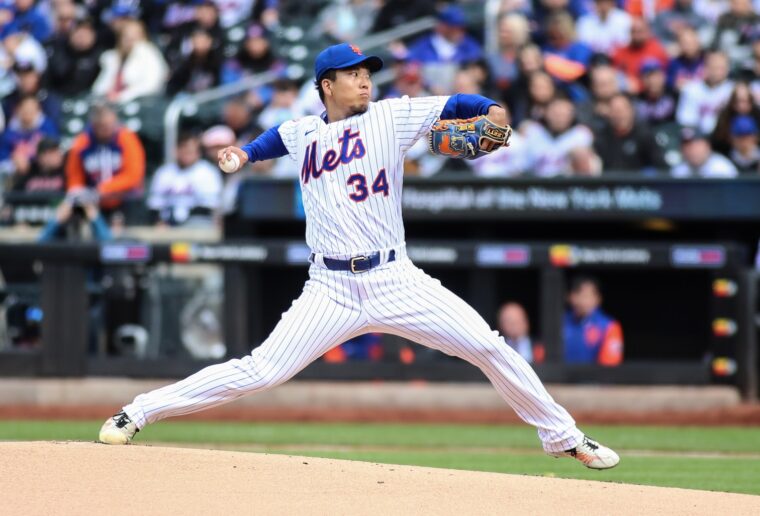The Mets had one of their most exciting wins of 2023 on Wednesday night. After failing to generate any runs for the first 26 outs, the Mets rallied from behind on a home run by Francisco Álvarez and an RBI triple from Mark Canha to defeat the Diamondbacks 2-1. The ninth inning comeback would not have been possible without the masterful performance by Kodai Senga.
Senga pitched his best start of the season on Wednesday, tossing eight innings and throwing 107 pitches to set new career-highs in both categories. He allowed just four hits—a solo home run and three weakly hit singles—while holding the first-place Diamondbacks to just the one run and striking out 12. The 12 strikeouts also matched a career-high that Senga set on May 17 at Citi Field against the Tampa Bay Rays.

Wendell Cruz-USA TODAY Sports
Senga was at 99 pitches when he finished the seventh inning, and after allowing the game’s first run on a home run by Christian Walker, it appeared his night was done. But the Mets pushed Senga, and he went out for the eighth inning and made quick work of the three Diamondback hitters he faced.
“Sending him back out there for the eighth was a good conversation,” Buck Showalter said. “He never wants to come out of the game.”
It was not Senga’s first dominant start, but he did attack hitters in a way we had not seen yet from the Japanese right-hander this season. It is well known that Senga’s ghost fork is a lethal putaway pitch. Hitters are just 11-for-87 against it (.126) with two extra-base hits, 60 strikeouts and a 59.6 whiff percentage—the highest number on a single pitch in baseball. The Diamondback hitters knew to be wary of the ghost fork, but he countered by attacking with low fastballs in two-strike counts to catch hitters off guard. Of his 12 strikeouts, four were looking at fastballs at the bottom of the zone.
Senga generally does not throw strikes at a high rate. Only the Padres’ Blake Snell throws strikes less often than Senga, but the Mets’ rookie starter used that to his advantage on Wednesday night in Arizona. Of his 107 pitches, 72 were thrown for strikes. By pitching backwards, he had Diamondback hitters guessing all night. Along with five looking strikeouts on the night, he generated 18 swings and misses by using his breaking pitches in all counts.
“With the All-Star break coming up, I knew I had a lot of days off and I wanted to go deep into the game,” Senga said following the victory. “To be able to do that, it was special.”
The Mets opted to give Max Scherzer the series opener, giving Senga an extra day of rest. The decision payed off as Senga was at his best in the familiar environment. Along with the extra rest, Senga was pitching indoors for the first time as an MLB pitcher (the roof was open for his MLB debut in Miami), which is something Senga did regularly as a member of the Fukuoka SoftBank Hawks in Japan.
While he has had his ups and downs, particularly due to the high walk rate, Senga has quietly turned in one the better first halves of any National League pitcher. He ranks first in batting average against, second in H/9, third in K/9, eighth in strikeouts and 10th in ERA. If Senga can continue to attack hitters the way he did on Wednesday night, he could find himself in the middle of the Rookie of the Year conversation by season’s end.















